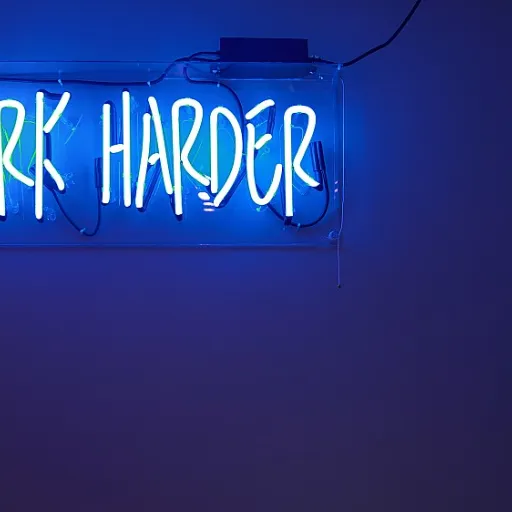
Understanding the dynamics of cohesive teams
Recognizing What Makes Teams Work Well Together
Understanding the dynamics of a cohesive team is a core skill for any chief human resources officer. Teams that work well together are not just a collection of employees, but a group of individuals who share trust, respect, and a common purpose. Building this cohesion requires more than just assembling talented members; it involves fostering a culture where collaboration and open communication are the norm.
One of the first steps is to observe and analyze how team members interact. Are employees good at giving and receiving feedback? Do they engage in team building activities that promote trust and respect? Recognizing these behaviors helps identify both strengths and areas for development within the group.
- Trust and respect: These are the foundation of any strong team. When members trust each other, they are more likely to share ideas and support one another.
- Open communication: Teams thrive when everyone feels comfortable voicing opinions and concerns. This openness leads to better problem-solving and innovation.
- Shared goals: Cohesive teams align around common objectives, which helps drive engagement and accountability.
- Constructive conflict: Healthy debate, managed well, can strengthen team cohesion by surfacing new ideas and building mutual understanding.
Effective strategies for building a cohesive team often include regular team building activities, leadership development programs, and clear communication of expectations. Data-driven approaches, such as employee engagement surveys, can help measure the current state of team cohesion and guide future initiatives.
It’s also important to recognize that team dynamics are not static. As teams grow or change, so do their needs. Continuous development, feedback, and adaptation are necessary to maintain a high performing, cohesive team culture.
For a deeper dive into how leadership dynamics influence team cohesion, you can explore this resource on leadership dynamics.
Communication skills for chief human resources officers
Clear and Consistent Messaging Drives Team Cohesion
Effective communication is the backbone of any cohesive team. For chief human resources officers, it’s not just about sharing information—it’s about ensuring every member understands the team’s goals, values, and expectations. When communication is clear and consistent, employees know where they stand and how their work contributes to the group’s success. This clarity helps build trust and respect among team members, which are essential for strong team dynamics and high performing teams.
Active Listening and Feedback Foster Trust
Listening is just as important as speaking. Leaders who actively listen to their employees create an environment where team members feel valued and heard. This encourages open dialogue and honest feedback, both of which are crucial for building trust and cohesion. Regular feedback sessions, whether one-on-one or in group settings, help identify areas for improvement and celebrate achievements. This approach not only supports employee engagement but also strengthens the overall culture of collaboration.
Adapting Communication Styles to Diverse Teams
Today’s teams are more diverse than ever, and chief human resources officers must adapt their communication strategies to suit different backgrounds, personalities, and work styles. This means being mindful of cultural differences, varying communication preferences, and the unique needs of each team member. By doing so, leaders can ensure that everyone feels included and empowered to contribute, which is vital for fostering a cohesive team environment.
Leveraging Communication for Team Building
Communication is a powerful tool for team building activities and cohesion strategies. Whether it’s through regular team meetings, collaborative projects, or informal check-ins, these interactions help members work well together and reinforce shared goals. Structured communication channels, such as digital platforms or dedicated feedback team sessions, can also support ongoing development and leadership within teams.
- Encourage open dialogue to build trust and respect
- Use clear messaging to align team members with organizational goals
- Adapt communication styles to fit the needs of diverse employees
- Provide regular, constructive feedback to support employee development
For more insights on developing the emotional resilience needed for effective leadership and communication, explore our article on building emotional resilience: essential skills for leaders.
Conflict resolution and mediation
Effective Approaches to Navigating Team Disagreements
Conflict is a natural part of any group dynamic, especially in high performing teams where diverse perspectives and strong personalities come together. For chief human resources officers, the ability to mediate and resolve conflicts is essential for maintaining team cohesion and trust. When handled well, disagreements can actually strengthen relationships and foster innovation among team members. A cohesive team relies on open communication and mutual respect. When members work through conflicts constructively, they build trust and reinforce the group’s commitment to shared goals. Here are some practical strategies for addressing conflicts and supporting a culture of collaboration:- Encourage open dialogue: Create safe spaces where employees feel comfortable expressing concerns. This helps surface issues early and prevents escalation.
- Active listening: Listen to all sides without judgment. Acknowledge each team member’s perspective to show respect and validate their experiences.
- Focus on behaviors, not personalities: Address specific actions or outcomes rather than assigning blame. This keeps discussions productive and solution-oriented.
- Promote shared problem-solving: Involve the group in finding solutions. This not only builds buy-in but also leverages the team’s collective strengths.
- Follow up and provide feedback: After resolving a conflict, check in with employees to ensure the solution is working and that relationships remain strong.
Fostering diversity and inclusion
Embedding Diversity and Inclusion in Team Practices
A cohesive team thrives when every member feels valued and included. For chief human resources officers, fostering diversity and inclusion is not just a compliance task—it’s a core strategy for building trust, respect, and high-performing teams. When employees see their unique backgrounds and perspectives embraced, they are more likely to engage, collaborate, and contribute to group success. Diversity goes beyond visible differences. It includes varied experiences, skills, and ways of thinking. Inclusion ensures that all team members work well together, leveraging these differences for stronger outcomes. Here are some practical strategies:- Promote open communication: Encourage feedback and dialogue, making it safe for employees to share ideas and concerns. This builds trust and helps identify behaviors that support or hinder cohesion.
- Implement inclusive team building activities: Design activities that allow everyone to participate, regardless of background or role. These activities help build relationships and reinforce a culture of belonging.
- Review data regularly: Use employee engagement surveys and other data to spot trends in team dynamics. This helps identify areas where inclusion strategies are working or need improvement.
- Provide leadership development: Equip leaders with the skills to recognize and address bias, and to model inclusive behaviors. Leadership plays a key role in shaping a culture where all members feel respected.
- Celebrate diverse achievements: Acknowledge the contributions of all team members. Recognition fosters a sense of belonging and motivates employees to continue working towards common goals.
Developing leadership within teams
Empowering Team Members Through Leadership Growth
Developing leadership within teams is a core responsibility for chief human resources officers. When employees feel empowered to lead, even in small ways, the entire group benefits from increased trust, respect, and engagement. Leadership development is not just about promoting individuals to higher roles. It’s about cultivating behaviors that encourage all team members to contribute, collaborate, and take ownership of their work. A strong team culture emerges when everyone feels their voice matters. This sense of belonging is essential for building a cohesive team. HR leaders can use several strategies to nurture leadership at every level:- Encourage feedback: Regular feedback sessions help employees understand their strengths and areas for growth. This open communication builds trust and helps members work well together.
- Promote collaboration: Assigning group projects or cross-functional activities allows employees to practice leadership skills in a supportive environment. These team building activities foster cohesion and help identify future leaders.
- Offer development opportunities: Providing access to training, mentorship, and leadership development programs shows employees that their growth is valued. This investment in people strengthens team cohesion and supports a high performing culture.
- Recognize leadership behaviors: Celebrating employees who demonstrate initiative, empathy, and effective communication encourages others to adopt similar behaviors. Recognition reinforces the importance of leadership in building cohesive teams.
Measuring and sustaining team cohesion
Tracking Progress and Adapting Strategies
Maintaining a cohesive team is not a one-time achievement. It requires ongoing measurement and adaptation to ensure that employees continue to work well together and that trust and respect remain strong. Chief human resources officers play a key role in monitoring team dynamics and making adjustments to cohesion strategies as needed.
- Regular feedback: Gathering feedback from team members helps identify areas where collaboration and communication can be improved. This can be done through surveys, one-on-one conversations, or group discussions.
- Employee engagement metrics: Tracking engagement scores, turnover rates, and participation in team building activities provides valuable data on the health of team cohesion.
- Observation of behaviors: Noticing how members work together during meetings or projects reveals much about the level of trust and respect within the group.
Strong team cohesion is also supported by leadership development and ongoing training. Encouraging employees to participate in leadership development programs helps build trust and prepares team members to take on new responsibilities. Cohesive teams benefit from a culture where feedback is welcomed and acted upon, allowing for continuous improvement.
To sustain high performing teams, it is important to celebrate successes and recognize employees who demonstrate behaviors that contribute to a cohesive team. This reinforces positive actions and motivates others to follow suit. Ultimately, the goal is to create an environment where all members feel valued, supported, and empowered to contribute to the group’s success.













